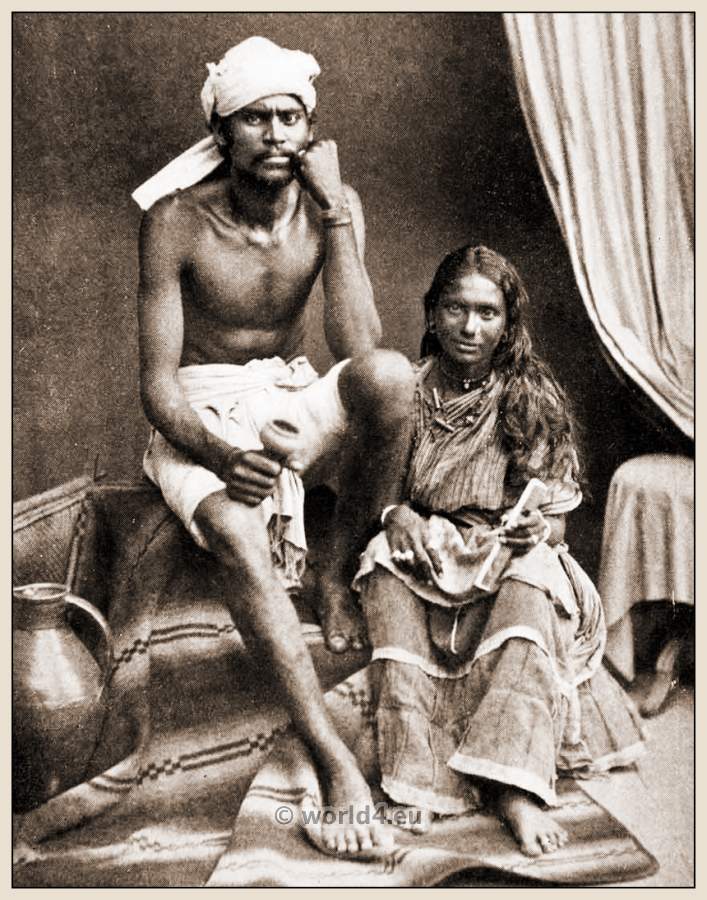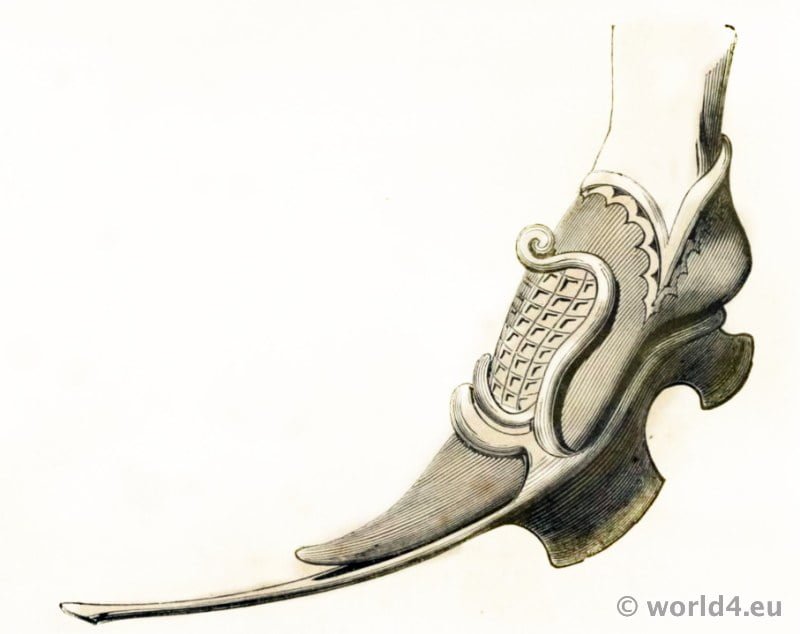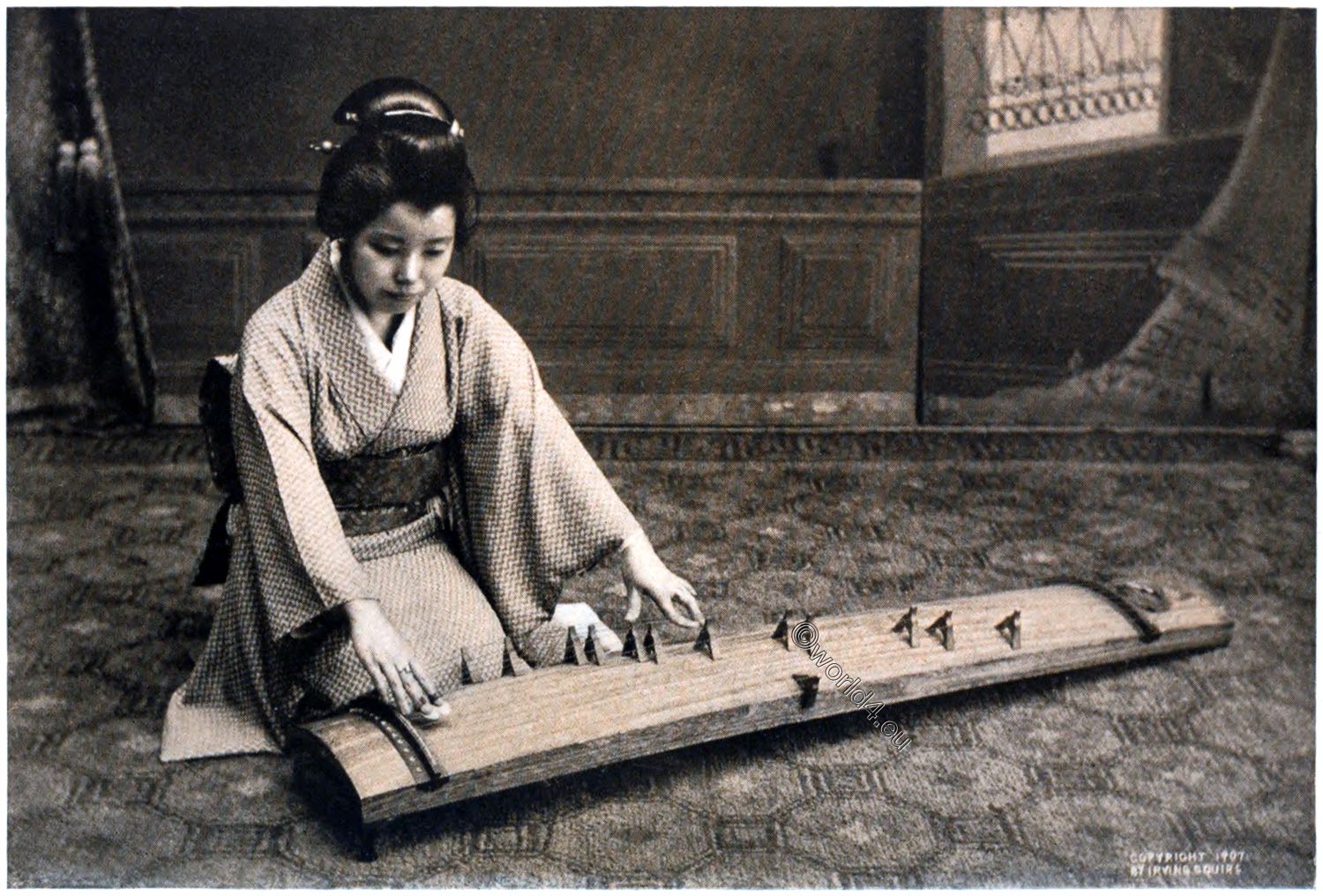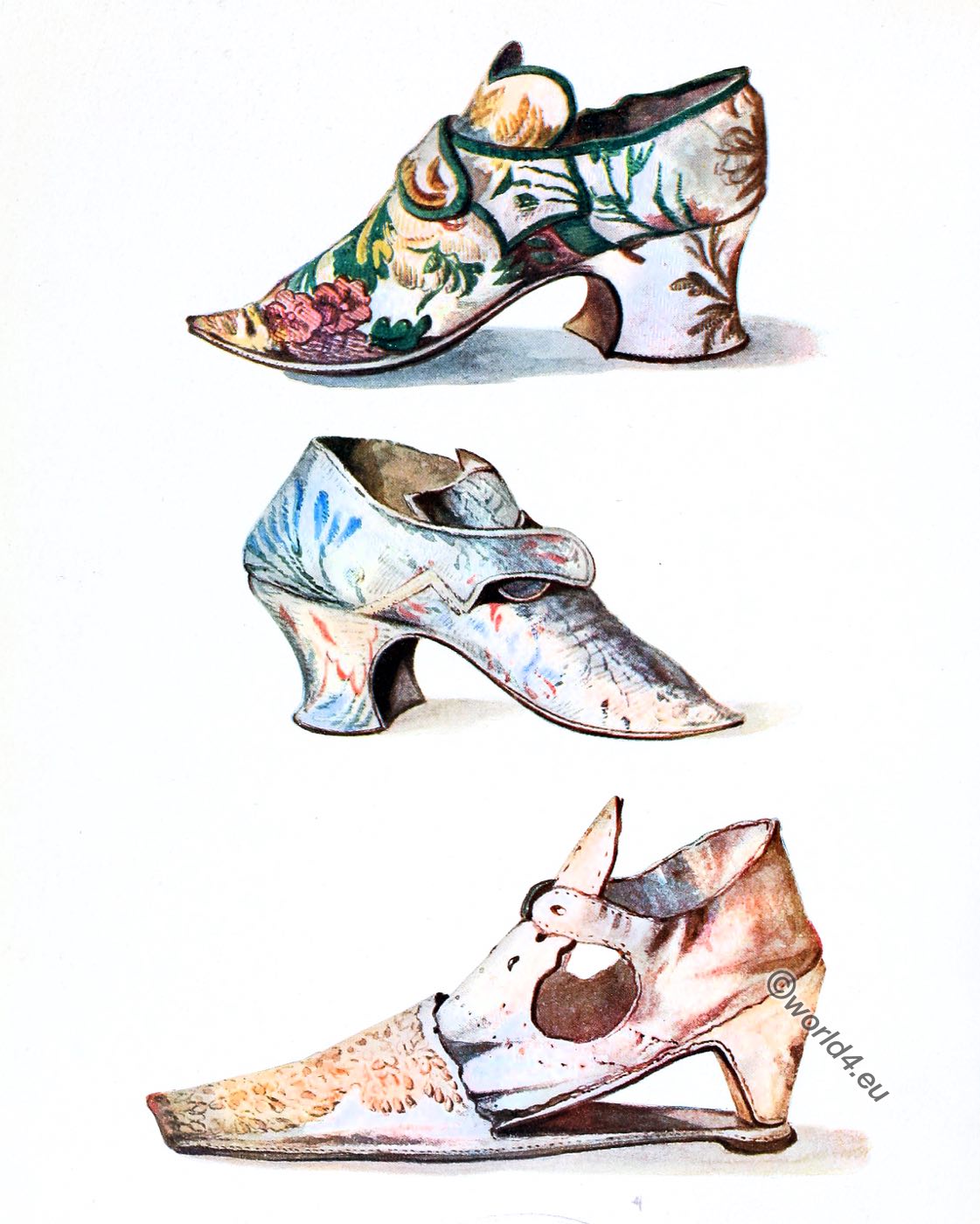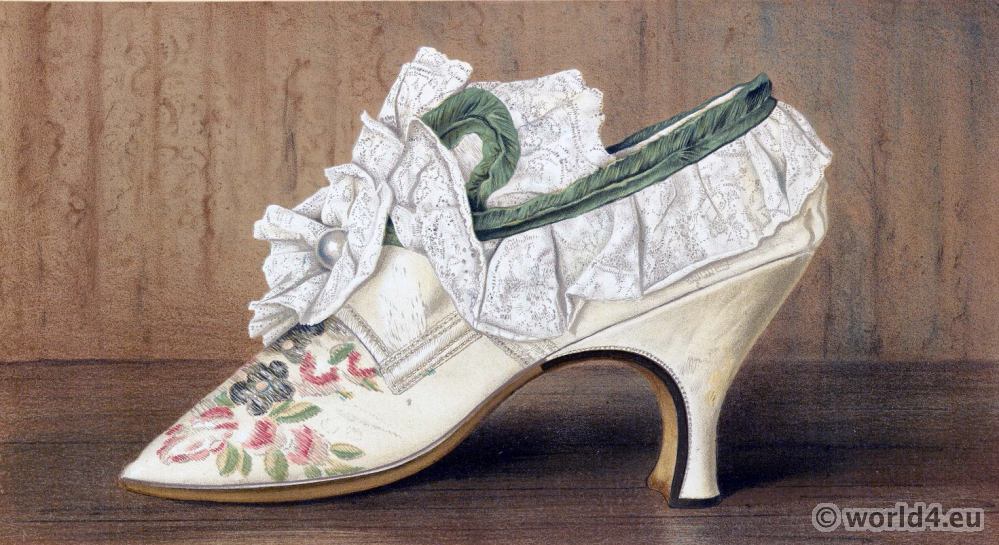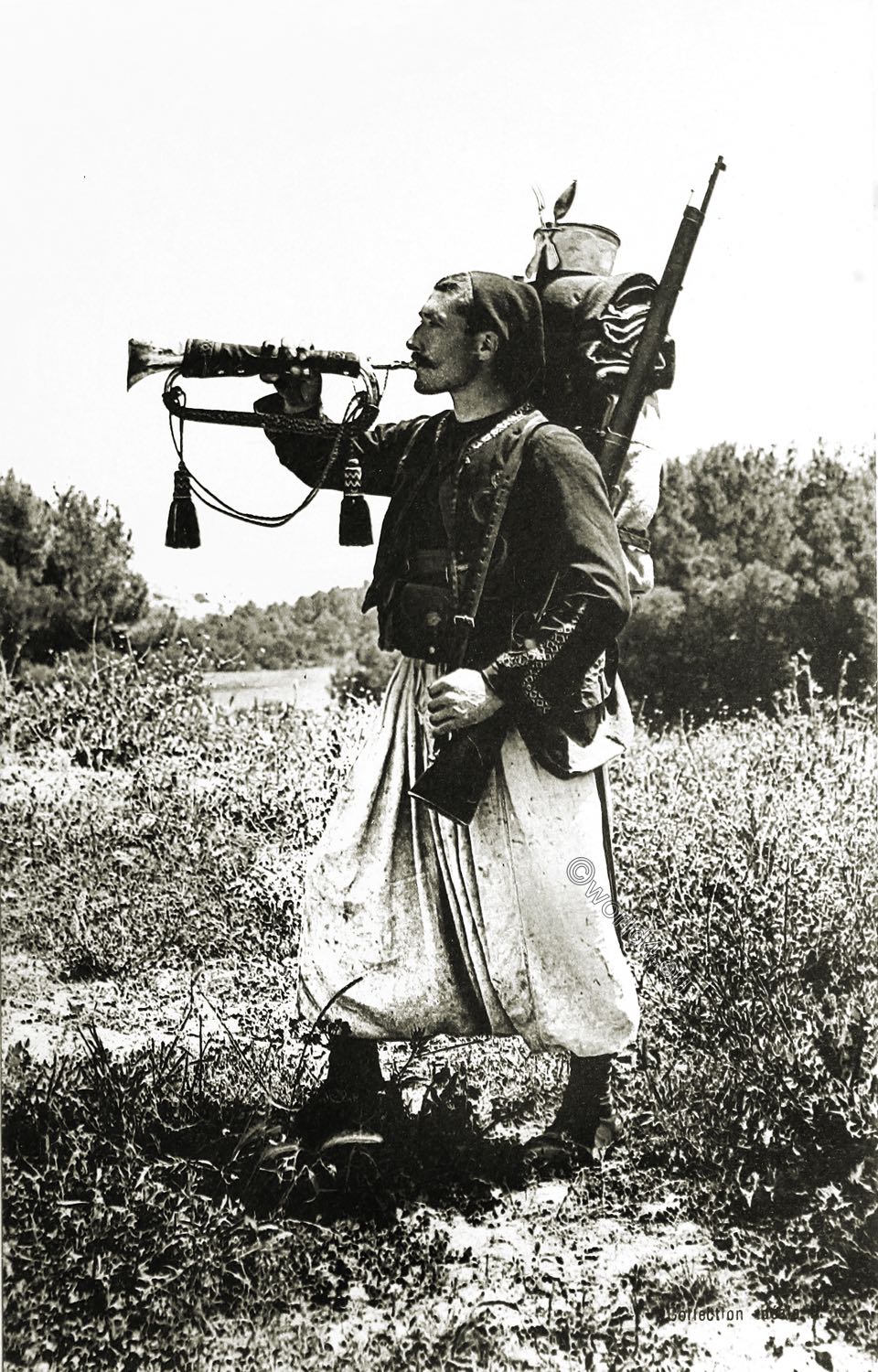JAPANESE SHOES.
by Francis Brinkley
From top to bottom:
First row: Girl’s, Boy’s Rain-shoe, Man’s, Man’s Rain-shoe.
Second row: Woman’s, Girl’s, Garden Work-shoe, Child shoes.
Third row: Woman’s, Girl’s, Woman’s Rain-shoe, Farmer’s, Priest’s.
Fourth row: Woman’s, Girl’s, Workmen’s, Jinrikisham (Rickshaw).
Shoes are never worn indoors, and the variety in form and construction is designed mainly to meet the conditions of the weather and the occupation of the wearer.
Rain being frequent, the “rain shoe” is worn more than any other. The wearer is raised high and dry three or four inches above the ground, and at each step his wooden clogs give forth a clattering sound that is heard continuously in every thoroughfare.
Source: JAPAN. Described and Illustrated by the Japanese. Written by Eminent Japanese Authorities and Scholars. Edited by Captain F Brinkley (1841 – 1912) of Tokyo Japan. With an Essay on Japanese Art by Kakuzo Okakura (1860 – 1929) Director of the Imperial Art School at Tokyo Japan. 1897.
Francis Brinkley (30 December 1841 – 12 October 1912) was a British newspaper proprietor and publisher who served as a foreign adviser to Japan during the Meiji era. He lived in Japan for most of his life and was the author of several books on Japanese culture, art and architecture, as well as an English-Japanese dictionary. He is also known as Frank Brinkley or Captain Francis Brinkley, and was the great-uncle of Cyril Connolly.
Discover more from World4 Costume Culture History
Subscribe to get the latest posts sent to your email.



